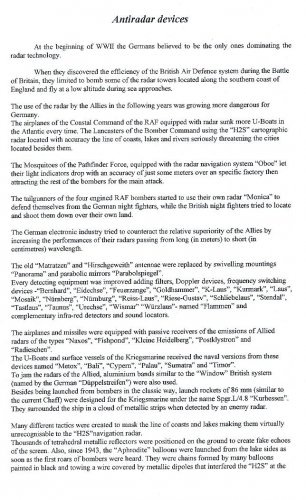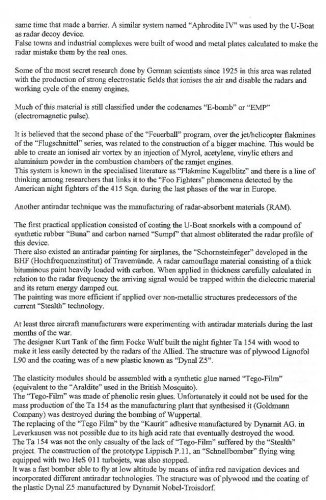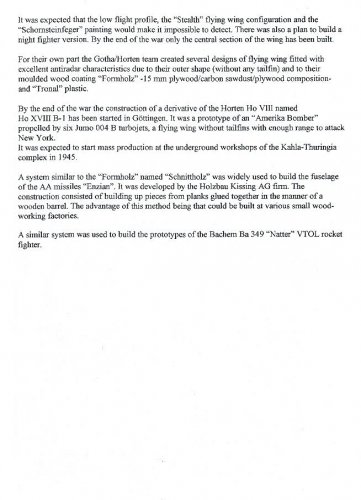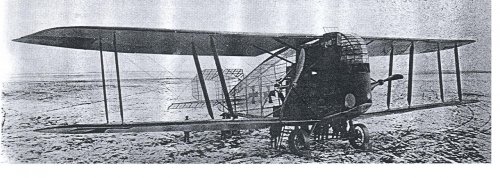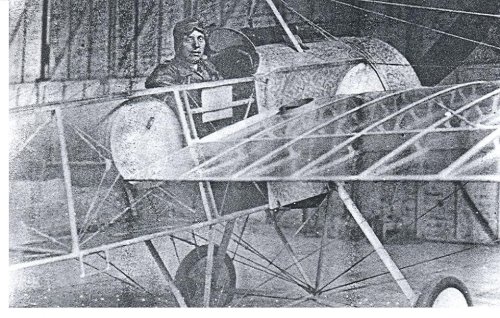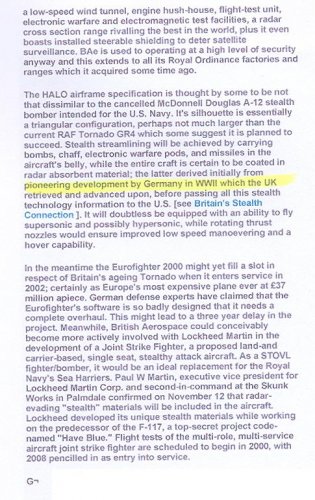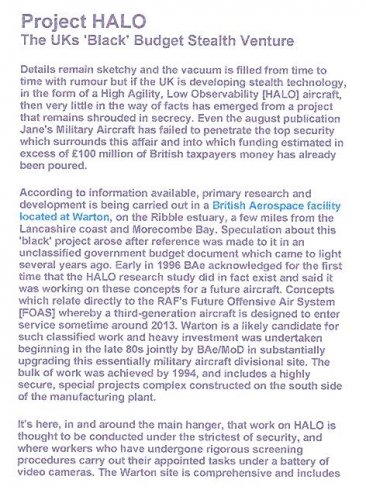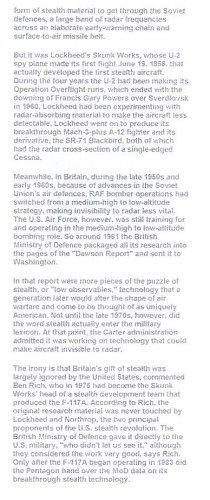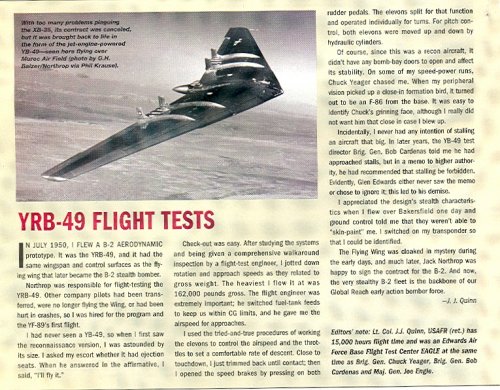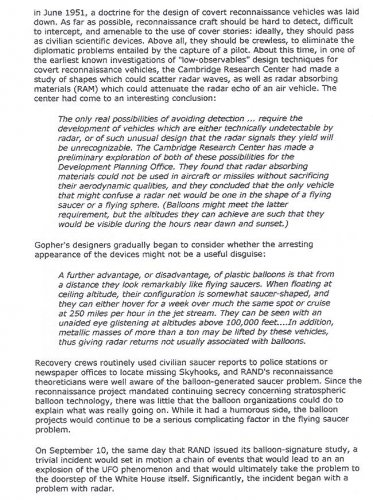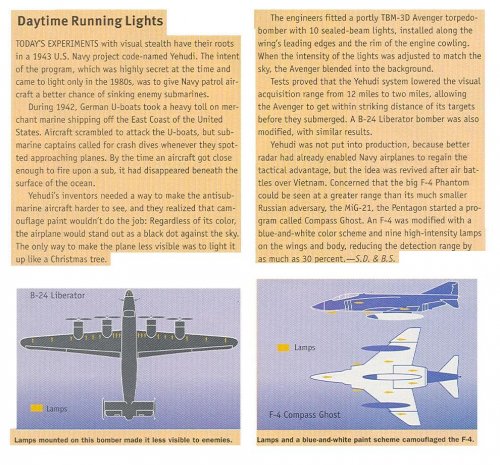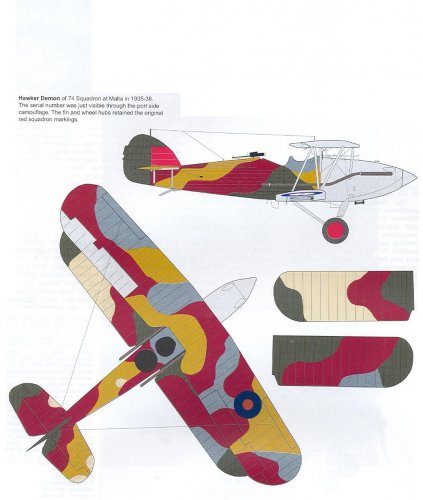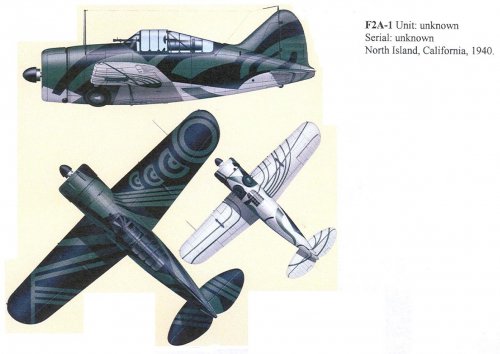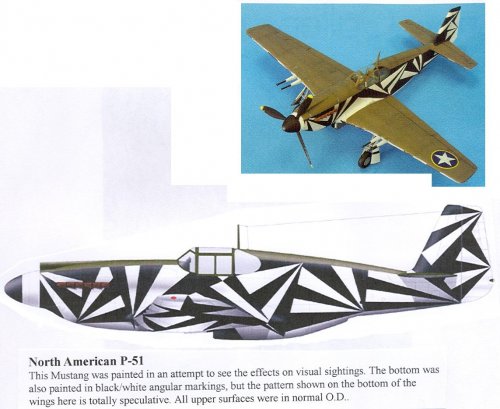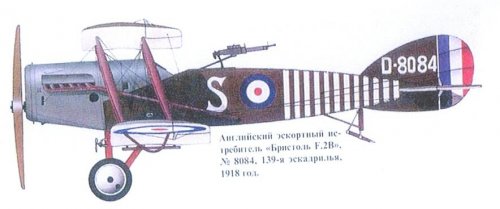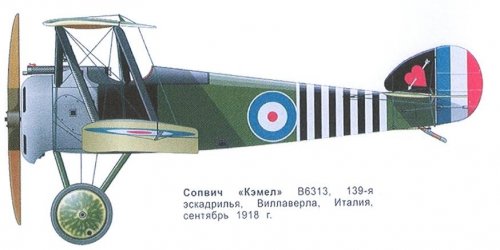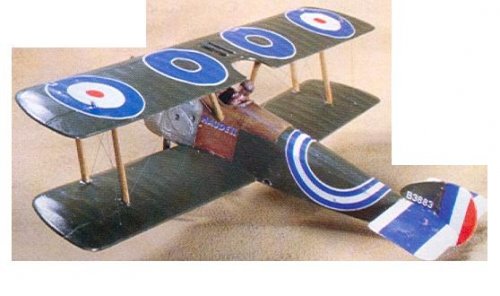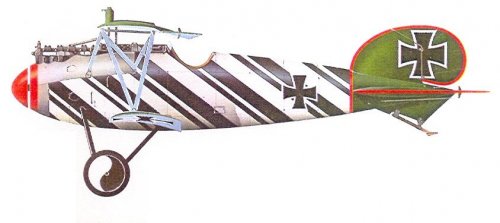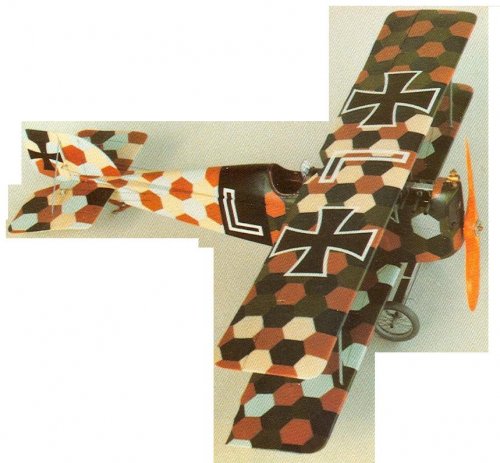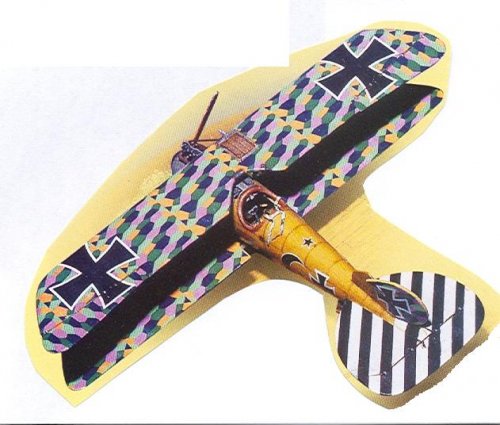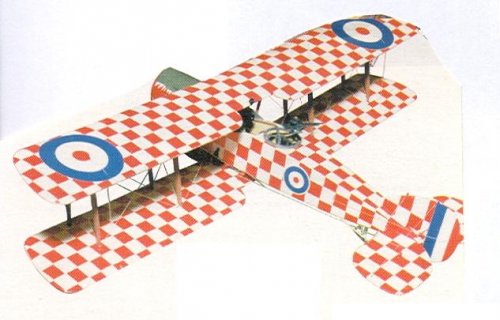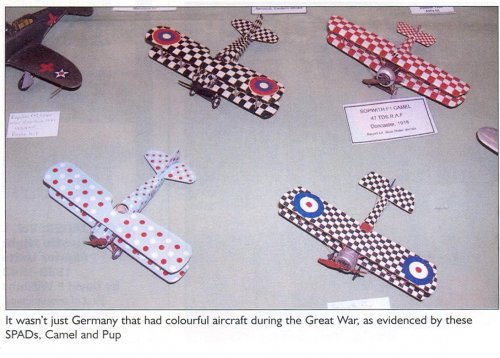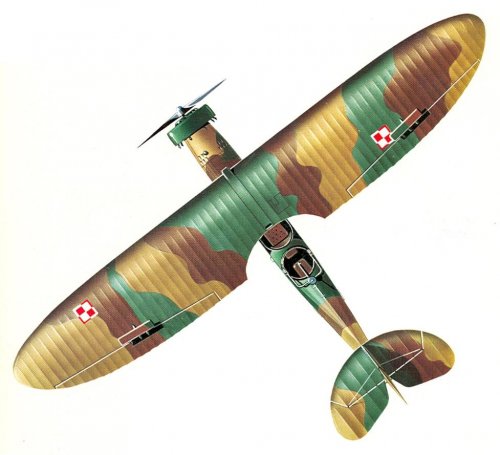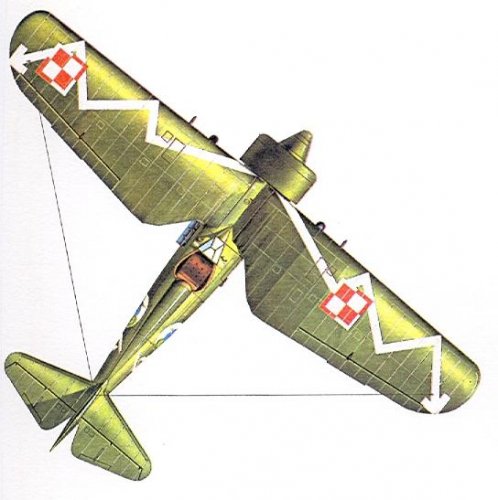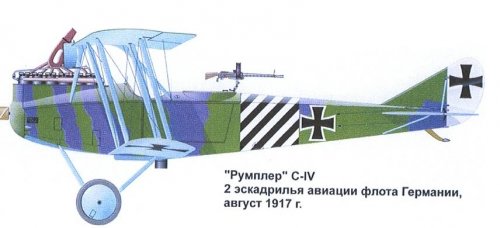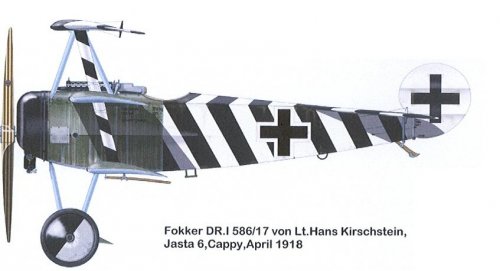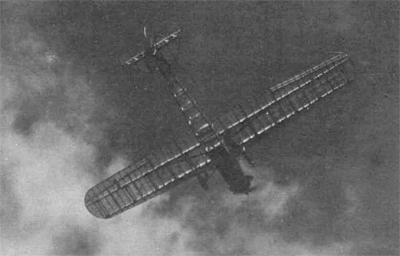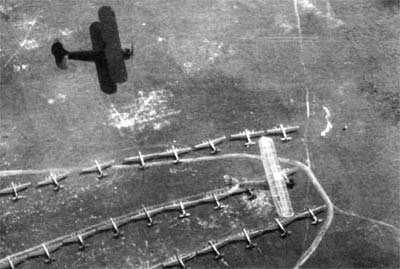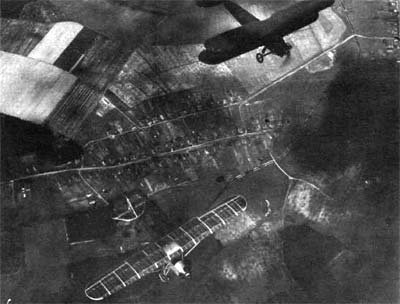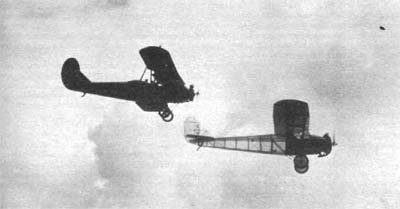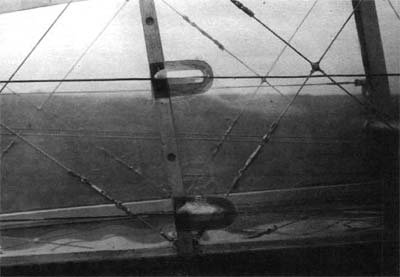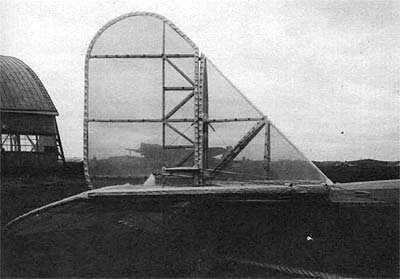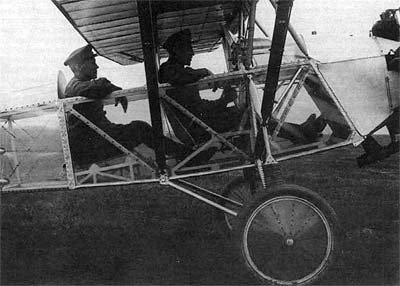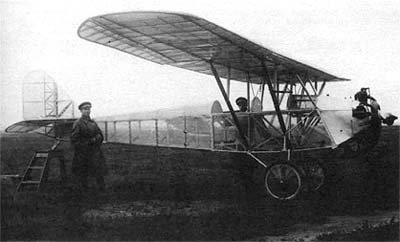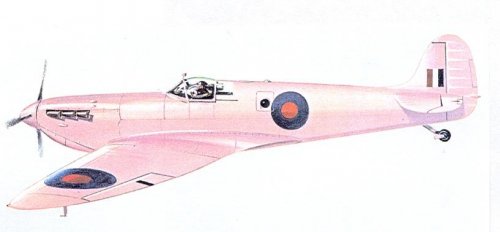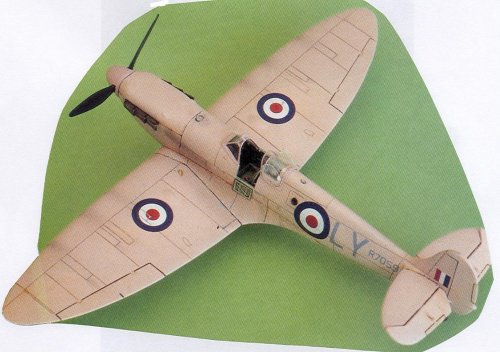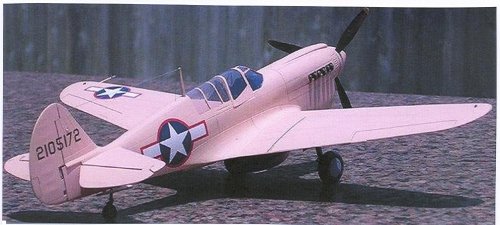Classified USAF stuff ?
The XP-61C program lead to a scandal and the first substantive break between Northrop and the USAF. Jack Northrop was obsessed with flying wing aircraft and, in particular, with promoting his XB-35 flying wing bomber as a replacement for the B-36. He was responsible for diverting much effort away from the XP-61C into the XB-35 program, seriously delaying the former. This eventually resulted in an explosive meeting during which Northrop was instructed to cease all work on the XB-35 and concentrate on the XP-61C. Northrop responded by threatening to “go public” on the XB-35 vs B-36 debate, alleging that the selection of the B-36 was the result of a corrupt conspiracy against his company. This would, of course, have compromised the secrecy that surrounded B-36 development. USAF action was swift and decisive. Northrop was told to continue with the XB-35 (the Air Force being determined that it would never proceed beyond a single prototype but the XP-61C program was taken away from Northrop and assigned to Goodyear, which had been a subcontractor for production of Black Widow components
The P-61 was heavily involved in the Thunderstorm Project (1946–1949) that was a landmark program dedicated to gathering data on thunderstorm activity. The Thunderstorm Project was a cooperative undertaking on the part of four U.S. government agencies: the U.S. Weather Bureau, the U.S. Army Air Force, Navy and National Advisory Committee for Aeronautics (later to become NASA). Scientists from several universities also participated in the initiation, design and conduct of the project. The Florida phase of the Thunderstorm in 1946 continued in a second phase of the project carried out in Ohio during the summer, 1947. Results derived from this pioneering field study in 1946–47 formed the basis of the scientific understanding of thunderstorms and much of what was learned has been changed little by subsequent observations and theories. Data was collected for the first time from systematic radar and aircraft penetration of thunderstorms forming the basis of many published studies that are still frequently referenced by mesoscale and thunderstorm researchers.
The last USAF F/RF-61C finally left USAF service in 1952.
In November 1949, the Air Force ordered all XB-35s scrapped. Scrapping of the XB-35s began in
January 1950, the only flying YB-49 was destroyed on March 1950 during a failure of the nose landing
gear. See the Northrop and Symington article for more details.
Northrop asked to meet with NASA officials in early 1979 to explain his ideas about the design--and to tell why his version was killed 30 years earlier.
"It was a fascinating story," said Gerald Kayten, deputy director of NASA's aeronautical systems divisions, who attended the half-day meeting at Northrop University in Inglewood. "But there really wasn't much of a meeting of minds. All Mr. Northrop seemed to be interested in was pointing out that his airplane was a pretty good airplane. He didn't need to convince Us, because we already agreed with him." NASA already decided, however, to put the Flying Wing design "on a back burner" because it was best suited for much larger cargo planes than will be needed by military or commercial users for the next two decades, Kayten told The Times.
Northrop Claims AF Scuttled 'Flying Wing'
by Ken Gepfert, Los Angeles Times, December 8, 1980
In the years during and immediately after World War II, aviation pioneer John K. Northrop developed and tested an odd-looking, jet-propelled bomber that he believed would revolutionize aircraft design. With no fuselage and no tail, the craft was aptly dubbed the "Flying Wing," and the Air Force selected it to replace the war-tested B-29.
Then, in 1949, Flying Wing production was abruptly canceled and all test planes were ordered destroyed.
For three decades, Northrop has refused to discuss why this promising airplane--the culmination of his lifelong dream -- was scrapped so suddenly.
But in a dramatic taped interview broadcast last week, the 85-year-old Northrop Corp. founder finally told his secret The Flying Wing was canceled, he said, because he refused to obey an Air Force order that he merge his then-fledgling company with a more established competitive firm. When he balked, Northrop said, the Air Force summarily awarded the bomber contract to the competing firm.
Northrop said he kept quiet for all these years because he feared the Pentagon would blackball his company if he disclosed the story. He said he even committed perjury before Congress to hide the facts.
Northrop's allegation shed new light on a generation-old controversy that has become one of the biggest mysteries in American aviation. But it also raised new questions that may never be answered.
In a precise unemotional tone, Northrop told his story to longtime aerospace reporter Clete Roberts in an interview on Los Angeles Public Television station KCET. Since that interview, taped in October, 1979, Northrop has suffered a series of strokes that have left him seriously ill and unable to speak.
The 14-month delay between the interview and its broadcast as part of the KCET documentary last week was due partly to delays in gathering additional material for the telecast and partly to a postponement request by Northrop.
Northrop's story was corroborated by Richard W. Millar, 81, who witnessed the drama as chairman of the Hawthorne-based aerospace company at the time and who still serves as Northrop vice chairman. But Millar, also interviewed by Roberts, has refused to respond to other questions since the broadcast, saying only that his taped statements "provide an accurate account" of the Flying Wing cancellation.
The Air Force secretary accused of issuing the merger order, former Sen. Stuart Symington (D-Mo.), 79; refused to be interviewed by Roberts. Repeated attempts by The Times to reach both the elder Symington and his son, also a former congressman, were unsuccessful. Most of the other witnesses to events surrounding the Flying Wing cancellation are dead.
Based on the KCET broadcast and subsequent interviews by The Times with Northrop's son and others familiar with the story, however, the picture emerges of a man in a 30-year struggle between his love for the company that bears his name, and for the aircraft that was to be his contribution to aeronautical history.
Northrop, who has long felt his plane had been wronged by history, finally decided to tell his story after becoming convinced--incorrectly as it turned out--that the National Aeronautics & Space Administration was about to resurrect his basic idea.
The Flying Wing bomber was the product of more than 20 years of experimentation by Northrop, who believed as early as 1929 that a plane that was all wing would out-perform traditional designs featuring wings fuselage and tail assembly. By putting the 15-man crew eight engines and the bomb bay inside the wing, Northrop minimized the plane's drag and maximized its lift. As a result. the Flying Wing would carry a payload that was nearly equivalent to the plane's weight--a feat matched by no previous aircraft.
Wins Competition
To select a bomber to succeed World War II's B-29s, the Air Force pitted Northrop's Flying Wing, designated the B-35 and later the B-49, against a traditionally configured bomber built by Consolidated Vultee Aircraft Corp. (Convair), which later became a division of General Dynamics Corp. The Flying Wing won a competition against Convair's B-36 in 1948 and the Air Force awarded Northrop a contract to build 35 bombers with the possibility of ultimately producing 200 to 300 planes.
But Northrop's elation turned into disbelief when he and company chairman Millar were summoned to meet Symington shortly after winning the contract in June 1948, according to their taped statements.
Noting that his was "a very strange story and perhaps difficult to believe," Northrop told KCET reporter Roberts that Symington launched into a "lengthy diatribe" about how the Air Force did not want to sponsor any new aircraft companies because the Pentagon could not afford to support them with continuing business on declining post-war budgets. Then, Northrop said, Symington demanded that Northrop Corp. merge with Convair.
General Reacts
At that point, Northrop recalled, Brig. Gen. Joseph T. McNarney, commander of the Air Materiel Command and subsequently president of Convair said, "Oh, Mr. Secretary, you don't mean that the way it sounds."
"You're . . .right I do," Symington answered, according to Northrop and Millar.
Northrop and Millar told KCET's Roberts that they then visited Floyd Odium, head of Atlas Corp., which controlled Convair, to discuss a possible merger. But talks soon ended, Northrop said, because Odlum's demands were "grossly unfair to Northrop "
A few days later, Northrop recalled, Symington telephoned him and said, "I am canceling all of your Flying Wing aircraft."
"I said, 'Oh, Mr. Secretary, why?' "
"He said, I've had an adverse report,' and hung up," Northrop recounted. "And that was the last time I talked to him and the last time we could reach him by phone or any other way."
As part of the cancellation, Millar added, the Air Force ordered the destruction of seven Flying Wings then under construction. "Those airplanes were destroyed in front of the employees and everybody who had their heart and soul in it'" said Millar, his voice cracking.
After the Air Force canceled the Flying Wing and awarded the contract to the competing Convair B-36, a House Armed Services subcommittee held hearings in 1949 to investigate allegations that the Pentagon~used coercion in its aircraft procurement practices.
Prompted by Rumors
According to press accounts at the time, the investigation was prompted by "ugly rumors" about Symington and other Pentagon officials. One rumor investigated--and denied by witnesses at the hearing--was that Symington had been considered to head the firm that would result from the proposed merger between Consolidated Vultee and Northrop.
Among the witnesses who denied seeing any evidence of Pentagon coercion was John K. Northrop.
Northrop testified that he did not "feel there was any unjustifiable or unreasonable pressure in the cancellation of the B-49 contract. I would call the move reasonable and logical." When asked under oath if he was in fear of Pentagon reprisal, Northrop laughed and said, "I have no fear of reprisal."
Thirty-one years later, when asked about his testimony by reporter Roberts, Northrop responded, "My reaction is that under pressure of the life or death of Northrop Corp., I committed one of the finest jobs of perjury that I've ever heard."
Northrop said in the taped interview that he did not tell the full story until now because he feared that Symington would cause the "complete obliteration" of his company. Millar said that the meeting with Symington was so "brutal and bare-faced" that "you almost had to assume that he would be prepared to take further steps if we didn't do as good boys and go along."
After serving as Air Force Secretary, Symington was elected to the U.S. Senate, where he remained for 24 years. He was an influential member of both the Armed Services and Foreign Relations committees, and unsuccessfully ran for the Democratic presidential nomination in 1960. He retired from the Senate in 1977.
Through his secretary in Washington, Symington told reporter Roberts that he "never did (the) sort of thing" alleged by Northrop and Millar.
Prior to Northrop's account, a popular explanation for the Flying Wing's demise was technical failures. The aircraft did exhibit stability and control problems during testing, and one test plane disintegrated during a rout~ne night in 1948, killing all five crew members.
The Air Force was apparently convinced enough that problems were being corrected to award the production contract to Northrop just five days after the accident. however. The accident investigation proved inconclusive.
Because of Symington's refusal to answer questions and the death of such key witnesses as Gen. McNarney, Convair chief Odlum, and post-war Defense Secretary Louis Johnson, there may never be consensus on the fate of the Flying Wing.
Whatever the reasons, there is no question Northrop personally was devastated by the cancellation and destruction of the Flying Wing--his lifelong obsession.
In 1952, at the relatively early age of 57, Northrop abruptly retired and divested himself of all interest in the company he founded. "At that time, Jack essentially felt his career was over," said historian William A. Schoneberger, who is writing a book on Northrop's life.
According to his son, John H. Northrop of La Canada Northrop was particularly troubled by persistent historical accounts that portrayed the Flying Wing as a technical failure in light of its cancellation by the Air Force. The younger Northrop told The Times his father decided he could no longer remain silent. After reading that NASA was considering a Flying Wing design for an advanced, fuel-efficient cargo plane.
Northrop asked to meet with NASA officials in early 1979 to explain his ideas about the design--and to tell why his version was killed 30 years earlier.
"It was a fascinating story," said Gerald Kayten, deputy director of NASA's aeronautical systems divisions, who attended the half-day meeting at Northrop University in Inglewood. "But there really wasn't much of a meeting of minds. All Mr. Northrop seemed to be interested in was pointing out that his airplane was a pretty good airplane. He didn't need to convince Us, because we already agreed with him." NASA already decided, however, to put the Flying Wing design "on a back burner" because it was best suited for much larger cargo planes than will be needed by military or commercial users for the next two decades, Kayten told The Times.
Nonetheless, id a letter sent to Northrop after the meeting, NASA Administrator Robert A. Frosch acknowledged Northrop's pioneering work and said "our analyses confirmed your much earlier conviction as to the load-carrying and efficiency advantages of this design approach."
Armed with this evidence that the wisdom of his approach finally was being recognized by the government, Northrop asked the company's present management for permission to tell his story, according to Northrop's son.
Even after telling his story to Roberts, Northrop had second thoughts and asked the reporter to delay broadcasting the interview for several months, according to the KCET reporter. "Then one day he called and said 'Go ahead, Clete. It's all clear now,' " Roberts recalled.
Northrop, now seriously ill in a Glendale hospital, was given a private screening of the documentary before it was broadcast. He could not speak to give his reaction, his son said, but "he put his hands together and shook them, like a fighter does, to show us he was pleased."

